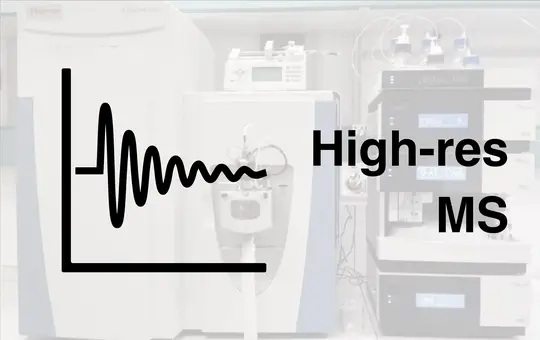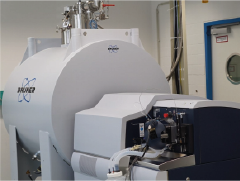High-res MS
Kontakt:
Web:
Infrastrukturzugehörigkeit:
FT-ICR-MS wird zur Charakterisierung polarer Verbindungen wie NSO (stickstoff-, schwefel- und sauerstoffhaltige organische Verbindungen) in fossilen und jüngeren geologischen Proben (Sedimente, Sedimentgesteine, Kohle, Böden und Wasserproben), zur Bewertung sekundärer Umwandlungsprozesse in Erdölsystemen (Reifung, biologischer Abbau und Migration), zur Charakterisierung hochmolekularer aromatischer Verbindungen, zur Aufklärung von Molekülformeln und zur molekularen Bildgebung eingesetzt.
GC-MS wird im Allgemeinen zur Identifizierung und Quantifizierung organischer Verbindungen in komplexen Gemischen, zur Analyse fossiler Biomarker, zur Analyse aromatischer Kohlenwasserstoffe und zur Strukturaufklärung eingesetzt.
Das Thermo Q-Exactive Plus (Orbitrap#1) wird für die hochauflösende, hochempfindliche Analyse von Targetverbindungen (über Thermo UltiMate 3000 UHPLC) sowie für die Analyse von gruppierten und positionsspezifischen Kohlenstoffisotopen über direkte Injektion oder über einen HPLC-Autosampler mit Schleife (ESI) verwendet. Thermo Q-Exactive Plus (Orbitrap#2) wird für die Analyse von gruppierten und positionsspezifischen Kohlenstoffisotopen mittels direkter Injektion (APPI & APCI) verwendet. Thermo GC-Exploris (Orbitrap#2) wird für die Analyse von gruppierten und positionsspezifischen Kohlenstoffisotopen mittels GC (EI) verwendet.
Fachspezifische Schlagworte
- Atmospheric Pressure Chemical Ionization
- Atmospheric Pressure Photoionization
- Electron Ionization
- Electrospray Ionization
- Matrix-Assisted Laser Desorption/Ionization
- Fourier Transform Ion Cyclotron Resonance Mass Spectrometry
- Gas Chromatography Mass Spectrometry
- Geochemie
- Organische Geochemie
Kategorien
Instrumentierung
Laboratory instrumentation
Instrumente
-
Fourier Transform Ion Cyclotron Resonance Mass Spectrometer
Mass spectrometer based on the principle of ion cyclotron resonance in which an ion in a magnetic field moves in a circular orbit at the cyclotron frequency that is characteristic of its m/z value. Ions are coherently excited to a larger radius orbit using a pulse of radio frequency electric field, and their image charge is detected on receiver plates as a time domain signal. Fourier transformation of the time domain signal results in a frequency domain signal that is converted to a mass spectrum based on the inverse relationship between cyclotron frequency and m/z. (Source: IUPAC; https://doi.org/10.1351/PAC-REC-06-04-06)
-
Gas Chromatography Mass Spectrometer
In the simplest terms, the GC/MS instrument represents a device that separates chemical mixtures (the GC component) and a very sensitive detector (the MS component) with a data collector (the computer component). Additional information available at "http://caag.state.ca.us/bfs/toxlab/gcms.htm" [Summary provided by the California Bureau of Forensic Services] (Source: Global Change Master Directory (GCMD). 2023. GCMD Keywords, Version 16.3. Greenbelt, MD: Earth Science Data and Information System, Earth Science Projects pision, Goddard Space Flight Center (GSFC) National Aeronautics and Space Administration (NASA). URL (GCMD Keyword Forum Page): https://forum.earthdata.nasa.gov/app.php/tag/GCMD+Keywords)

